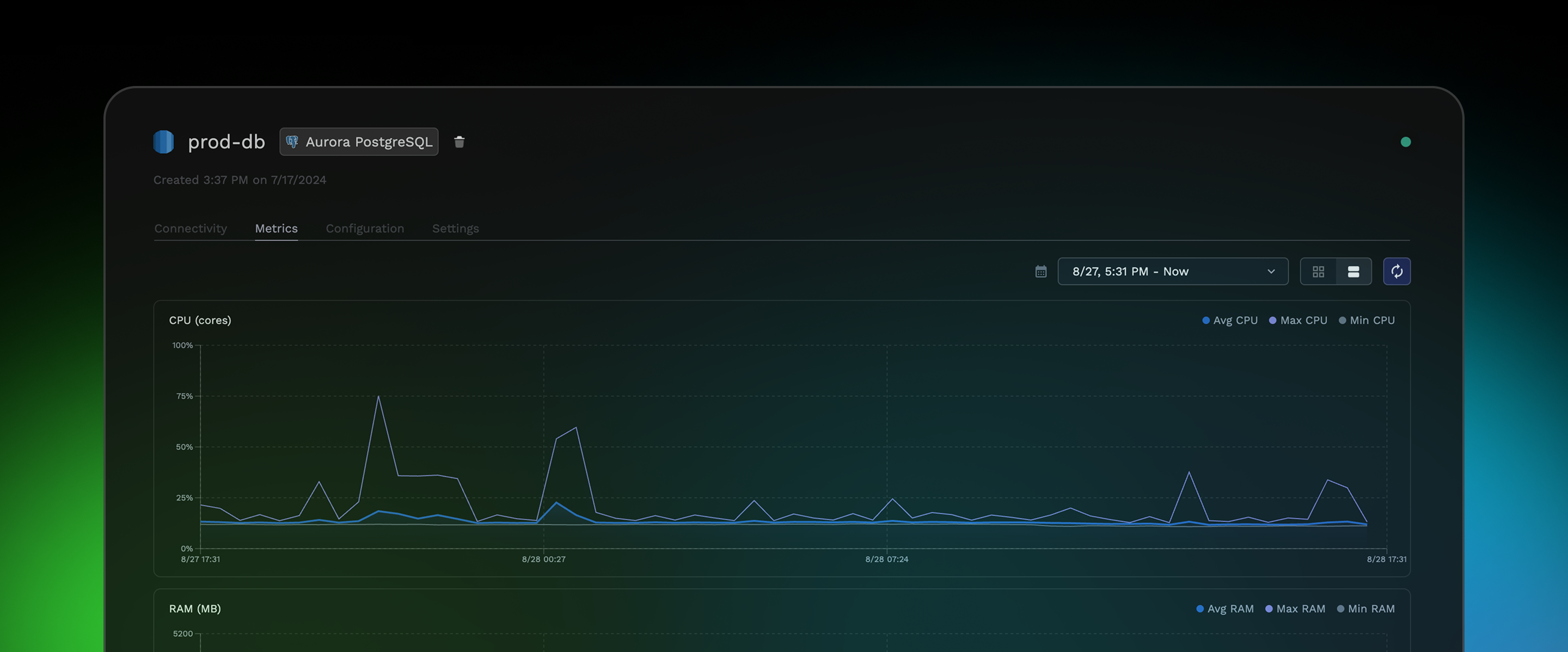Introducing the Add-on Explorer
Beyond deploying applications, many users also need to run supplementary workloads like databases, caches, and logging agents. While Porter seamlessly integrates with the managed services that are native to each cloud provider (like AWS RDS), we also provide an ecosystem of one-click add-ons for external integrations and internal use.
Now, you can use the Add-on Explorer to navigate our ecosystem of third-party add-ons. All add-ons are readily searchable from this view and we've added helpful tags for quickly filtering through different options by category.

UI improvements
- You can now configure application resources using CPU and RAM resource sliders. The resource sliders dynamically respond to the underlying machines you are using to set the appropriate ceiling for both CPU cores and GB of RAM
- Additional sort options are now available for listing applications
- Custom domains have been moved to a dedicated section under the "Networking" tab
- Projects are now searchable and multiple clusters can be connected to the Porter Apps view


Minimum permissions for AWS
Along with recently switching to the AWS Assume Role operation, we have trimmed the permissions Porter requires for provisioning and managing clusters in AWS to reflect how clusters are now accessed. For more information on provisioning to AWS you can refer to our documentation.
New to Porter and excited to try these features with your existing AWS/GCP cloud? Get started here.
Next Up






































